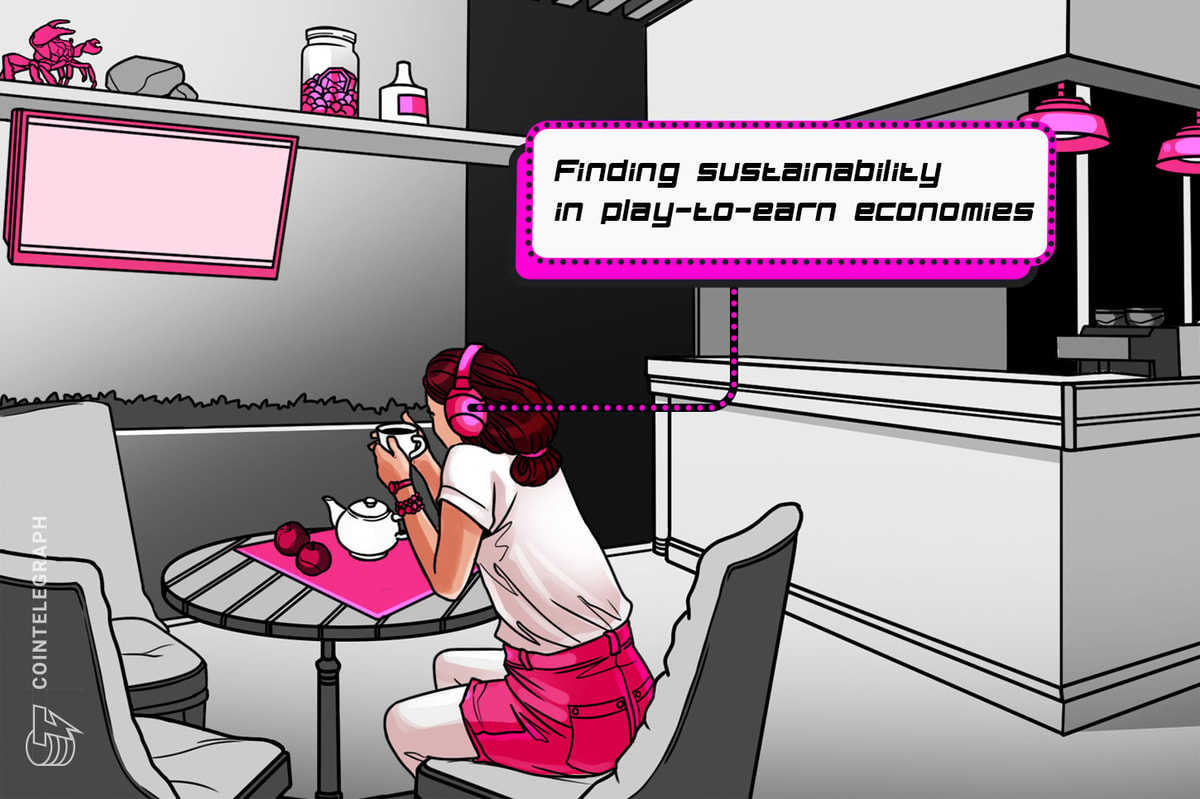P2E gaming is in a long ‘maturation phase’

[ad_1]
As the hype surrounding play-to-earn (P2E) games and platforms began to dwindle in early 2022, Web3 participants began to emphasize the need for games to be more “fun” and less finance-oriented.

In the most recent episode of NFT Steez, Alyssa Expósito and Ray Salmond speak with Aron Beierschmitt, the CEO of Laguna Games and founder of Crypto Unicorns, about the sustainability of P2E-focused blockchain games.
For Beierschmitt, the evolution from a play-to-earn to a play-and-earn model suggests that there is still experimentation and maturation to be seen for these games. “Nothing has changed about making games,” said Beierschmitt. But with blockchain technology, crypto natives and gamers are now able to play, own and potentially monetize from these play-and-earning models. The larger question at hand is, is it sustainable?
The paradigm and sentiment shift of P2E gaming
Regarding the shift in sentiment around P2E and how Crypto Unicorns is approaching it, Beierschmitt said it is “charting a path to sustainability through the combination of economic farming simulation” along with the real-time “skill-based gaming loops” to attract more users into its ecosystem. These gaming loops not only need to have a semblance of form and function but also need to be fun and engaging for players, according to Beierschmitt.
However, he also acknowledged that blockchain-based games are not for everyone and that Crypto Unicorns’ target demographic is more in line with those who are crypto-native.
According to Beierschmitt, there is a lack of “incentive alignment for free-to-play,” whereby developers maximize extracting value from the minority of players who spend in free-to-play games. This disparity creates a “mismatch in the paradigm,” whereby Web3 gaming enables players to reach a new level of autonomy and ownership when it comes to in-game items, assets and skill.
For Beierschmitt, this is what makes the play-and-earn model “compelling,” since players can potentially earn along the way while playing their favorite game. Web3 not only enables players’ provenance and ownership, but with governance models, players and participants are now empowered to take “ownership of the direction the game, ecosystem and IP [intellectual property],” said Beierschmitt.
Related: Crypto Raiders explains how blockchain gaming attracts new users to Web3
In-game economies are a work in progress
In-game economies have proven to be a sticking point for most play-and-earn games. When discussing the factors that are necessary for in-game economies to be sustainable in the long term, Beierschmitt explained that one factor that aids is the dynamic between passive and active players. Passive players are those who invest in active players to progress themselves in the game.
However, Beierschmitt emphasized that for the dynamic to be sustainable, “skill-based gaming loops” and “token sinks” must be implemented because this returns the player back to the economy and ecosystem. As Beierschmitt put it, most play-and-earn games are still sorting their transition from “growth phase” to “maturation phase,” but he does firmly believe there are “bright futures in the days ahead!”
For more on the discussion with Aron Beierschmitt, be sure sure to listen to the full episode of NFT Steez on the new Cointelegraph Podcasts page or on Spotify, Apple Podcasts, Google Podcasts or TuneIn.
The views, thoughts and opinions expressed in this podcast are the participants’ alone and do not necessarily reflect or represent the views and opinions of Cointelegraph.
[ad_2]
Source link

